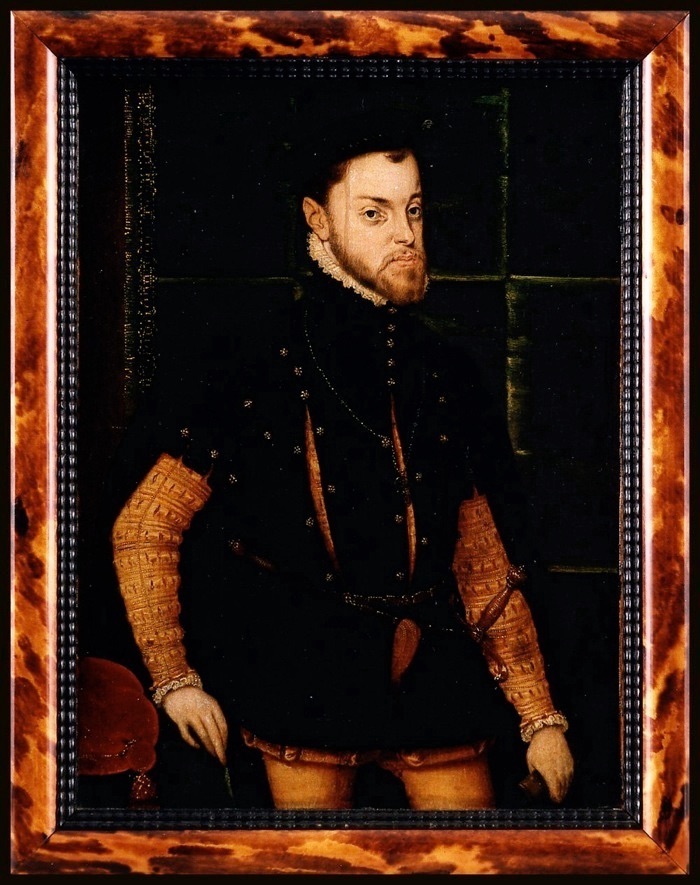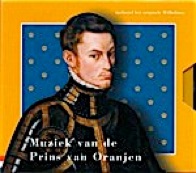Panel
Master of the Low Countries
after a painting by Sanchez the Coello.
Philip II, born in 1527, was the son of Charles V of Habsburg and Isabella of Portugal. When his father abdicated in 1555, he accepted the government of the Netherlands and in 1556 the government of the Spanish and Italian territories, while his uncle Ferdinand took over the government of the Empire. The Realm of the Habsburgs was divided into two branches: a Spanish branch in Madrid and Brussels, and an Austrian branch in Vienna. Philip was extremely pious, very forthright in his opinions, but also a great art lover. He brought, among many other paintings, a great number of paintings by Hieronymous Bosch to his court. As king, he claimed sovereignty over the Church, and was particularly aggressive against the Protestant movement, which overwhelmed Northern Europe after 1517. This was not long after the proclamation of Luther’s 95 theses. With great zeal, Philip took up the task of defending the position and rights of the Catholic Church. He launched a campaign of religious persecution which led to the revolt of the Netherlands in 1568, a conflict that would grow into an 80-year war.
In 1581, the Northern Netherlands rejected Philip as their King. In 1598 he left the Southern Netherlands to his daughter Isabella and her husband Albrecht of Austria. In the same year, after a long and extremely painful illness, Philip died at the Escorial, the monastery-palace which he had built for himself. The Spanish painter Alonzo Sanchez Coello (1531/32-1588) was working at the Portuguese court when he was called to Madrid 1554, to work for the Spanish King.
He developed into a portrait painter. Portraits are known of Philip, his family and members of the court. Coello’s portraits are significant for the positioning of his subjects - standing, erect- and the aloofness of their gaze: they seem to be above the mundane, and look down at us from another world.
Tomás Luis de Victoria (1548-1611)
Officium Defunctorum:
Libera Me
The Musick’s Monument Vocal Ensemble




